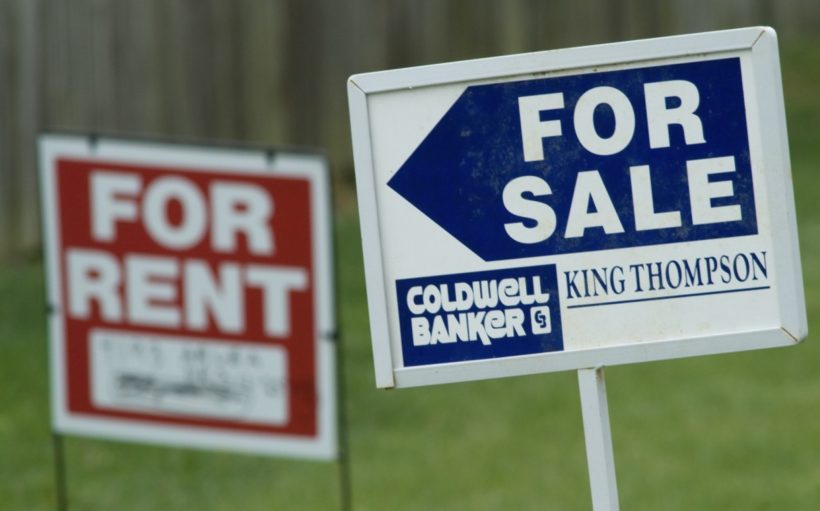The average 30-year fixed mortgage rate in the US recently topped 7%. This comes after two years of record-low mortgage rates of below 3% in 2020 and 2021.
The main cause? The Federal Reserve aggressively raising it’s short-term federal funds rate beginning in March 2022. The Fed meets eight times a year to set the rate, and so far this year, its raised it six times.
The most recent meeting took place November 1-2, when the Fed raised the federal funds rate to a target range of 3.75 to 4%. That means rates have increased by a total of 3.75 percentage points this year, which is the fastest rates have changed in recent history.
The sudden rate hike is an attempt by the Fed to reign in record levels of inflation after two years of an effective Fed rate of 0% (instituted in 2020 to stimulate the economy after the onset of the COVID-19 pandemic).
But the rising federal funds rate has serious implications for the housing market and specifically mortgage rates. Let’s dive into what they are and what the future of the US real estate market looks like.
The Relationship Between the Federal Funds Rate and Mortgage Rates
The federal funds rate does not control mortgage rates. Instead, it sets the rate at which commercial banks can borrow and lend their excess reserves to each other overnight without collateral (basically short-term loans backed by the federal government). And since the US government has never defaulted on its debt, the federal funds rate represents the interest rate on the most secure type of loan out there.
All other types of loans are inherently more risky. As a result, mortgage lenders tend to charge interest rates 1.7% above what the US government offers on its 10-year Treasury Bond. Mortgages aren’t particularly risky, but why lend at or below the rate of the 10-year Treasury Bond when it’s the safest investment around? That’s how the logic goes, at least. And that’s how the federal funds rate affects mortgage rates indirectly.
What Do Rising Mortgage Rates Mean for the Housing Market?
As for the impact of rising mortgage rates on the housing market, there’s a fairly straightforward chain reaction that takes place. It tends to go like this:
First, rising mortgage rates make homeownership more expensive. The slightest percentage difference in a mortgage rate can dramatically change how much you ultimately pay for a house. For example, the monthly payment on a $500,000 house with a 30-year fixed rate mortgage at 3% interest is $2108. The same house and mortgage at a 7% interest rate would require a $3,327 monthly payment. Over the course of the 30-year loan, you’d pay a total of $758,880 in the first scenario and $1,197,720 in the second. That’s a $438,840 difference, which is almost the size of the original loan ($500,000)!
As mortgages get more expensive, many would-be homebuyers are priced out of their market or simply choose not to buy. This dampens housing demand, which in turn forces determined sellers to lower their asking prices. In short, it’s a challenging time for homebuyers and home sellers alike.
That said, many people will continue to buy homes despite higher mortgage rates due to major life events, such as getting married, having a family, or changing jobs. So rising mortgage rates may signal a return to a normal, healthy real estate market, not an all-out crash. After all, it’s record-low mortgage rates in 2020 and 2021 that fueled the recent housing boom in the first place. Now the market is cooling.
In historical terms, today’s 7% mortgage rates are still below what they were for most of the time period between 1970 and 2000. So it’s important for homebuyers to maintain some perspective before panicking too much.
As for real estate investors, they may face narrower profit margins than they enjoyed over the past couple of years now that mortgages are more expensive and housing demand is no longer red hot. Investors will need to be especially thorough in their property analysis and use a generous margin of error in case the market continues to worsen. For example, rental property owners can partner with a trusted property manager to improve their workflows and optimize their overall operations.
When Will Mortgage Rates Drop Again?
It’s hard to say when exactly mortgage rates will begin to fall again. Nobody can predict the future. However, there is a scenario in which they could begin to drop as soon as 2023—specifically, if the US economy falls into a recession. In that case, here’s what might happen:
A recession would likely increase demand in US treasury bonds because it’s a relatively low-risk investment and people tend to be risk-averse during recessions. If that happens, classic supply and demand says that the higher demand for US treasury bonds will drive up their price, which will in turn lower their yield because the government can afford to pay lower yields when demand is high. This could ultimately also help lower mortgage rates since mortgage rates are directly correlated with the 10-year treasury yield.
Of course, that’s still speculative. Only time will tell how the US housing market will fair over the next few years. And even if mortgage rates do fall again in 2023, they’re unlikely to drop all the way back down to where they were in 2020 and 2021. If anything, they will stabilize around a healthy rate as will the US housing market as a whole.
Most real estate analysts agree that the housing market today looks much different than it did in 2008, so a market crash is unlikely. Instead, it’s more likely that the housing market will continue to cool until it reaches a normal growth level. Home prices will keep going up, albeit at a slower rate, and mortgage rates will stabilize.
Laila Azzahra is a professional writer and blogger that loves to write about technology, business, entertainment, science, and health.
